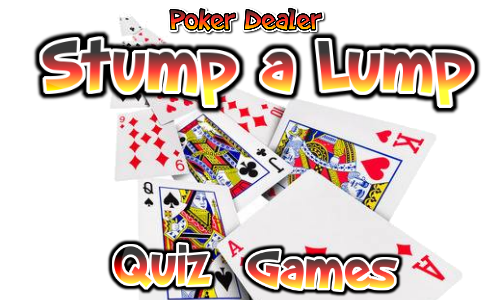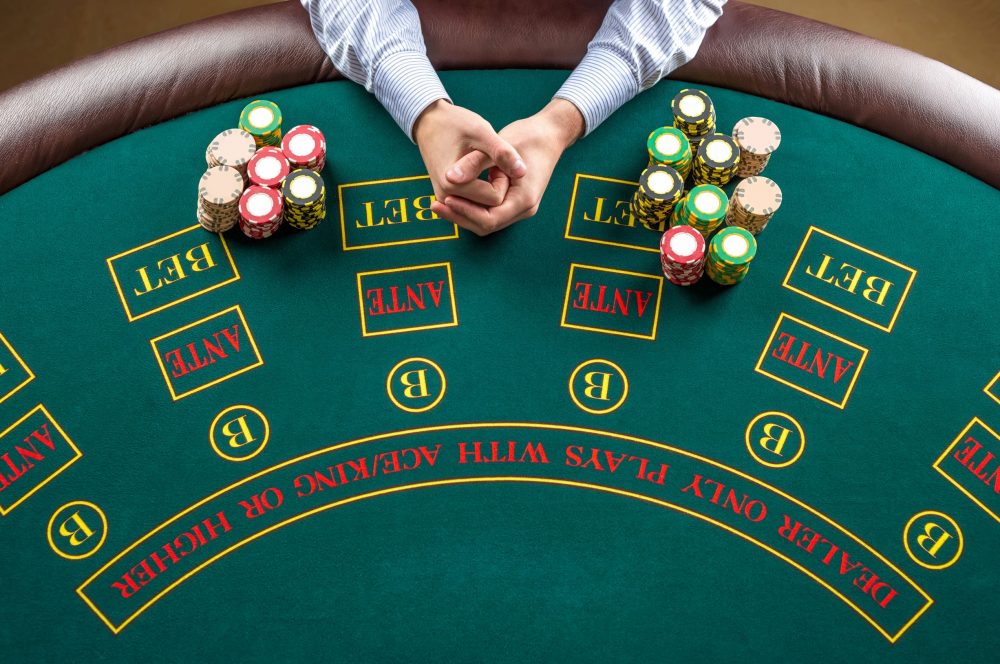Poker Strategy Dealer
Learning cash game strategy is essential if you want to be a professional poker player. Poker tournaments have extreme variance even when you are playing well, but cash games can provide a steady income. Daniel “Kid Poker” Negreanu is one of the most successful, respected, and influential poker players alive today. If you find yourself facing a dealer who shows one card of value 4, while your hand is worth 12, made up of a 9 and 3, a strategy would be to hit. In this situation, you don’t have a much higher.
Introduction

Blackjack Strategy Dealer Stands On Soft 17
It is not unusual to find a Three Card Poker dealer who inadvertently exposes one of his cards. This is due to height and location of the shuffler. It is natural for right handed dealers to grab the cards on the side, potentially exposing the bottom one to the players as he puts them down on the table. The best view is usually at first base, or the first position to act.
Blackjack Strategy Dealer Hits Soft 17
This advantage play has been known for years, and most dealers are trained to keep the dealer's cards low and parallel to the table, or to leave them in the shuffler until the dealer's turn. Still, I find dealers who flash often, especially in smaller casinos.
This is not the first time I wrote about this: I covered it briefly in my book and my September 6, 2003 newsletter. However, I feel it is time to quit holding back and let everybody in on this.
Strategy
Here is the strategy if the player can clearly make out the rank of one of the dealer's cards, according to the card exposed.


- 2 to J: Raise always.
- Q: Raise with Q-9-2 or better.
- K: Raise with K-9-2 or better.
- A: Raise with A-9-2 or better.
If all you know is that the dealer has a face card, then you should raise on Q-J-5 or better. If all you know is the dealer doesn't have a face card, then you should always raise, whether or not you can rule out the card being an ace, which you often can.
Odds
The following table shows the probability of each net win on the Ante bet assuming the player can make out the rank of one dealer card. The pays are based on the common pay Ante Bonus pay table that pays 5 for a stright flush, 4 for a three of a kind, and 1 for a straight. The lower right cell shows a player advantage of 3.48%.
One Rank Exposed Return Table
| Win | Combinations | Probability | Return |
|---|---|---|---|
| 7 | 1,851,132 | 0.001515 | 0.010608 |
| 6 | 2,795,916 | 0.002289 | 0.013733 |
| 5 | 867,312 | 0.000710 | 0.003550 |
| 3 | 26,929,356 | 0.022046 | 0.066138 |
| 2 | 272,048,544 | 0.222715 | 0.445429 |
| 1 | 357,814,224 | 0.292928 | 0.292928 |
| 0 | 689,736 | 0.000565 | 0.000000 |
| -1 | 142,804,152 | 0.116908 | -0.116908 |
| -2 | 415,710,828 | 0.340325 | -0.680650 |
| Total | 1,221,511,200 | 1.000000 | 0.034829 |
If the player can categorize the dealer's card as an ace, 2-10, or face card, then the player advantage drops to 2.41%. My book incorrectly stated this was the advantage for the paint or not-paint situation. The player should not play at all if he can't distinguish an ace from a 2-10, because the house would have a 2.43% advantage. To any players who may have played paint or not-paint games because of my book, I deeply apologize for the error.
The next table shows the player advantage under the 5-4-1 and some other known Ante Bonus pay tables.
One Rank Exposed Return Table
| Player Hand | Pay Table 1 | Pay Table 2 | Pay Table 3 | Pay Table 4 |
|---|---|---|---|---|
| Straight flush | 5 | 4 | 3 | 5 |
| Three of a kind | 4 | 3 | 2 | 3 |
| Straight | 1 | 1 | 1 | 1 |
| Player Edge | 3.48% | 3.02% | 2.57% | 3.24% |
Links
Both editions of Beyond Counting by James Grosjean cover Three Card Poker with lots of additional information. The first edition covers this topic in chapter 43, and the second in chapter 60. For example, he also covers the strategy for two known dealer cards and adjustments to make based on the cards held by other players.
 Written by: Michael Shackleford
Written by: Michael Shackleford